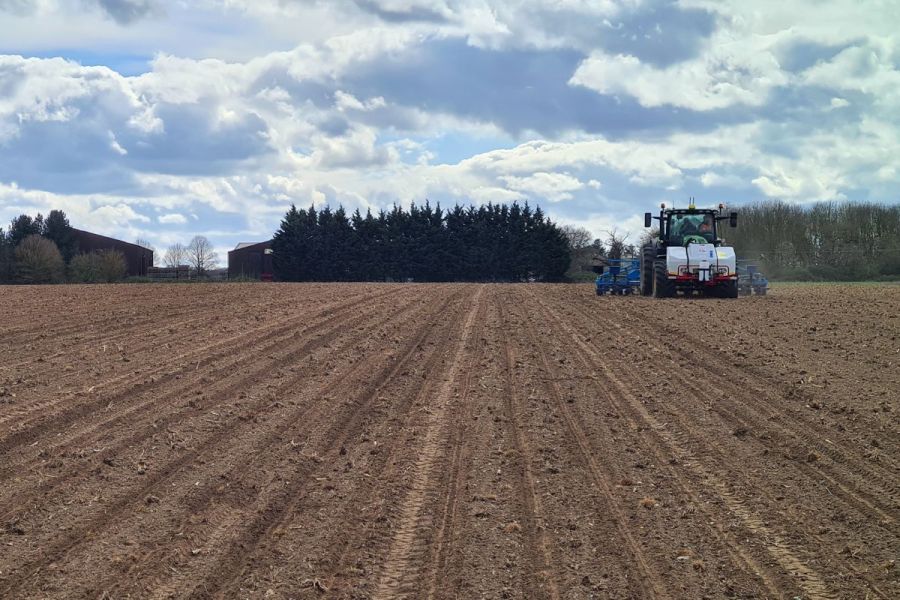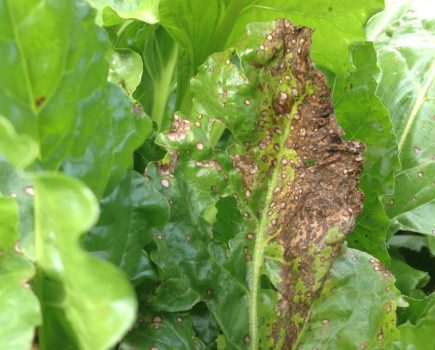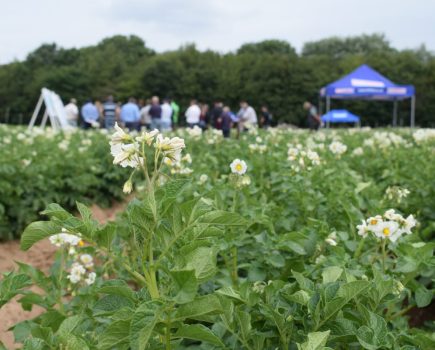In the second of a two-part series investigating new techniques or technologies to improve sugar beet growing, CPM looks at trials seeking to improve agronomic practice.
“There’s an assumption that these products might require managing differently, but we don’t know yet.”
By Mike Abram
There’s no escaping the fact nitrogen fertiliser is one of the biggest sources of greenhouse gas emissions from growing sugar beet on farm – just as it is with other arable crops. In fact, according to ADAS calculations for a British Sugar commissioned report, emissions from fertilisers are the second biggest source at 17%.
Only machinery accounts for more at 24%, so meeting net zero targets is almost certainly going to require changes in the way farmers use nitrogen, whether that’s the techniques used to apply it, the way it’s made, or the types of products used.
Equally, nitrogen drives growth, helping to achieve a healthy canopy as quickly as possible to maximise light interception and yield in the crop.
Consequently, understanding the impact of different application techniques or types of products on the growth and yield of a sugar beet crop, as well as emissions, are the key aims of new BBRO research which started this spring.
The project has two strands, explains BBRO applied crop scientist, Dr Georgina Barratt. “One looks at the placement of fertiliser, the other investigates the different products coming onto the market, including some which are slow-release.”
While fertiliser placement isn’t particularly new with some of the largest drilling contractors using it with success, there’s a lack of data backing up anecdotal reports of enabling lower fertiliser use, she continues.
“We don’t have enough data to back up that you could make savings,” says Georgina. “That’s preventing more growers from having the confidence to fit placement kits to their drills.”
Previous work in 2018 focused on discovering the optimum dose to place at drilling, which proved to be around 30-40kgN/ha. But this year’s trial on a farm just outside Bury St Edmunds in Suffolk is looking at whether the total dose of nitrogen can be reduced when using placement fertiliser for either part or all of what’s applied.
In total, there are five treatments covering around 8ha in 6m-wide 100m-long field-scale plots. Three treatments involve an initial placement of 30kgN/ha of liquid nitrogen at drilling, which have then been topped up with either nothing, 35kgN/ha or 70kgN/ha of broadcast solid urea to make totals of 30, 65 and 100kgN/ha.
“Obviously you wouldn’t not top up on farm, but from a scientific perspective, we want to know where just placing 30kgN/ha gets you to and then how much you have to follow up with,” says Georgina.
Alongside those three treatments is one where the entire dose of 97.5kgN/ha is placed at drilling. “We’ve spoken to Nordic Beet Research and learned they place all of their fertiliser, so this was another test.”
The final comparison is the control treatment of 30kgN/ha of broadcast ammonium nitrate at drilling followed by 70kgN/ha of broadcast solid urea to match the current farm standard.
Weekly assessments of canopy growth and health using NDVI imagery, canopy temperature and cover will follow establishment counts for each treatment, before three sets of biomass digs through the season.
“The first two digs at six and 12 true leaves will look at nitrogen use efficiency as well as speed of canopy development, and then just before harvest, a yield dig, which will also go through a tare house to look at impurity data as well as sugars,” explains Georgina.
She says that’s important because impurities are a problem for both growers and processors – suppressing yield and requiring costly removal in the beet factory. In particular, late season nitrogen uptake can drive increases in impurities, which is why there’s a requirement to trial new forms of fertiliser, because some have a slow-release mechanism which could potentially mitigate that drawback.
And that’s what’s been tested in a second trial – this time at two sites in a 6m by 10m replicated plot design rather than the tramline style plots of the placement trial.
“The other question we had was around the lower carbon fertilisers currently available and whether they work for sugar beet,” continues Georgina. “While you have Yara green fertilisers, which are ammonium nitrate made with renewable energy sources and will perform similarly to normal AN, you also have some organic matter-based fertilisers.”
Both Yara and CCm Technologies, for example, produce organo-mineral fertiliser products, which look a little like pulp nuts, she explains.
In the BBRO trials, these are being tested against ammonium nitrate and urea. Each treatment is applied in two applications – 60kgN/ha at drilling and another 40kgN/ha in early May, while there are also lower dose treatments of 50kgN/ha – all applied at drilling – of AN and zero applied fertiliser, lists Georgina.
Similar assessments as in the placement trial are planned, plus greenhouse emissions in the field. “Initially, the overall idea is to see how they perform in a standard programme. There’s an assumption that these products might require managing differently, but we don’t know yet. I thought the pellets might take forever to break down, but they actually disappeared in a couple of days, obviously with the rain helping.”
It could be they’re better applied pre-cultivation or pre-drilling, notes Stephen Aldis, BBRO’s head of field operations. “That would give a level of incorporation which might be better in a dry spring. They might also work better all being applied pre-drilling so there are lots of learnings to come.”
That kind of further research is planned for following years in the project, along with other combinations in the placement trials such as testing placed dry fertiliser as well as liquid, he adds.
This article was taken from the latest issue of CPM. Read the article in full here.
For more articles like this, subscribe here.
Sign up for Crop Production Magazine’s FREE e-newsletter here.




